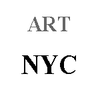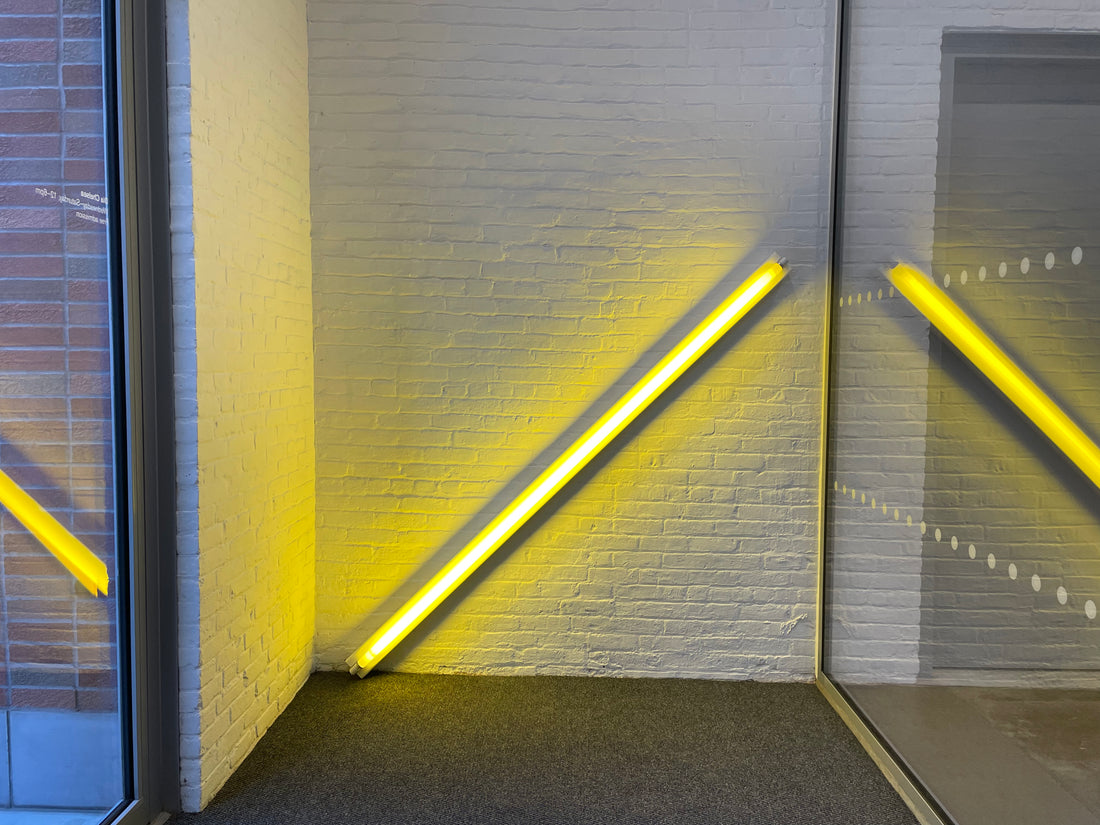
An image comes to mind when you think of colorful neon signs. A night street in the city, a street of drunken people, and an alley in an unorganized entertainment area come to mind. And what comes to mind when you think of fluorescent lights? You might think of some rustic interior without mood. However, an artist gracefully reinterpreted the space using this rustic Light.
Dan Flavin (1933-1996) was a minimalist writer who opened up a unique world of sensation to us with the subject of fluorescent lights, not art materials. He began his work in New York in the late 1950s and began working on fluorescent lamps in earnest in the late 1960s. In particular, on May 25, 1963, a fluorescent light purchased at a store was erected obliquely on the workroom wall and declared (Figure 2), and full-fledged lighting work began. He records this day as the day he tried his visual language.
If you're new to his work, you might wonder what's great about it, even though it's just a typical fluorescent lamp. However, just as breaking taboos is always a challenge for art, it is necessary to understand the background and meaning of the times of minimalism to understand the intention of this work.
The art philosophy of minimalism, which has been used since the late 1960s, contains a minimalist philosophy and can be seen as oriental art that emphasizes the beauty of margins in a macroscopic sense. Therefore, minimalist artists attempted to make particular hand-produced works look like products on purpose or use ready-made products to make them look different in different directions. It took the opposite position from abstract expressionism, which emphasizes flatness by breaking the flatness of the painting and intentionally making it seem theatrical or architectural. Their philosophy also leads to the phenomenology of later theory. Phenomenology removes historical and cultural contexts and expresses only the 'phenomenon' itself felt here and now. These spatiotemporal perceptions and place-specific art forms are interpreted as historical turning points in modern art. Since then, it has led to a movement to work critically on the system, breaking away from typical art systems such as installation art and art galleries that vary in meaning and form depending on the place to be installed. Minimalist writers include Donald Judd, Frank Stella, Robert Morris, and Carl Andre, Sol LeWitt.
Dan Flavin served as a meteorologist in the 5th Air Force unit in Osan, South Korea, in 1954. After studying art history at Columbia University in New York in 1956, he earnestly devoted himself to his work. His work is differentiated because he showed a new visuality that transforms space into Light using fluorescent lights as one of the distinct features of "minimalism" that modularizes standardized industrial materials and removes complexity. As a result, art was expanded beyond painting and sculpture by breaking the taboo of art and reflecting an industrialized society while providing new spaces and experiences with elegant and mysterious clouds. Now modern people are affected by the visual expansion that stems from his attempts.
While installing fluorescent Light works on corners or walls, he throws the title "untitled" or his friend's name into a vague relationship that contradicts the visual effects of beautiful visible colors and forms, raising questions about the relationship.
He said, 'Light is itself. Nothing more than that... All this is conveyed, open, and clearly."



